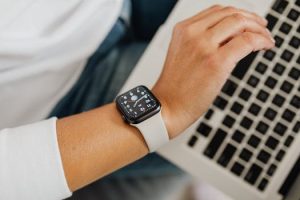Body Cameras and Accountability: How Technology Shapes Policing
In recent years, the use of body cameras in law enforcement has become increasingly prevalent, sparking both praise and controversy. The idea of officers wearing cameras to capture their interactions with the public is seen as a step towards greater accountability and transparency in policing. However, as with any technology, there are both benefits and drawbacks to consider. It is important to examine how body cameras influence the dynamics of policing and what implications they have for accountability in law enforcement.
The Rise of Body Cameras in Policing
The use of body cameras by law enforcement has gained traction in the past decade, with several high-profile cases of police brutality sparking calls for greater oversight and accountability. The most notable example is perhaps the death of Michael Brown in Ferguson, Missouri in 2014, which led to widespread protests and the demand for police to wear body cameras. Since then, the use of body cameras has become a common practice, with many law enforcement agencies implementing them as part of their uniform.
The Benefits of Body Cameras
Proponents of body cameras argue that they offer several benefits when it comes to accountability in policing. The most significant advantage is the potential to provide an accurate and unbiased account of interactions between officers and members of the public. This footage can then be used as evidence in cases where there are disputes or allegations of misconduct. It can also serve as a deterrent for police officers, knowing that their actions are being recorded and will be reviewed.
Body cameras are also seen as a way to improve police-citizen relations by promoting transparency and trust. By wearing cameras, officers are held accountable for their actions, and citizens may feel more comfortable knowing that their interactions are being recorded. This can lead to better communication and de-escalation of situations, ultimately resulting in safer and more positive interactions between law enforcement and the public.
The Drawbacks of Body Cameras
While the use of body cameras has its benefits, there are also significant drawbacks to consider. One of the most significant concerns is the potential for privacy violations. Footage captured by body cameras is subject to public records requests, meaning that personal information of citizens, including victims of crimes or witnesses, could be made public without their consent. There is also the issue of consent when it comes to recording interactions in private spaces, such as homes or hospitals.
Another concern is the cost of implementing and maintaining body camera programs. The cameras themselves can be expensive, and there are also additional costs for data storage and management. This can be a significant burden for smaller law enforcement agencies, and funding for body cameras may come at the expense of other essential resources.
The Use of Body Cameras in Practice
Although body cameras are becoming more prevalent in law enforcement, their use is not without controversy. Many police departments have policies in place regulating when cameras should be turned on or off, and there have been cases where officers have failed to activate their cameras during critical moments. This can lead to accusations of selective recording and defeat the purpose of promoting transparency and accountability.
The Role of Technology in Accountability
It is essential to recognize that body cameras are just one piece of the puzzle when it comes to accountability in policing. While they may provide valuable evidence in specific cases, they are not a solution for deeper-rooted issues within law enforcement. Ultimately, accountability comes down to the individual officers and the culture of an organization. Technology alone cannot change these factors.
Furthermore, the use of body cameras also raises questions about the role of technology in policing as a whole. As law enforcement continues to incorporate more advanced technology, such as facial recognition software and predictive policing algorithms, it is crucial to consider potential biases and implications for accountability. The use of such technologies must be closely monitored and regulated to ensure they do not contribute to further injustices.
In Conclusion
Body cameras have undoubtedly shaped policing in recent years, and their use will continue to evolve. They offer the potential for greater transparency and accountability in law enforcement, but their use must be carefully monitored to address concerns about privacy and cost. Ultimately, technology is just one piece of the puzzle when it comes to accountability in policing, and it must be used in conjunction with other measures to create meaningful change in the justice system.






